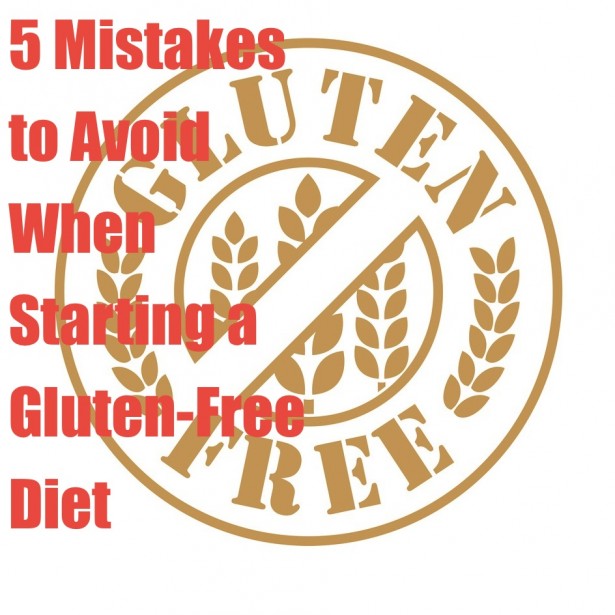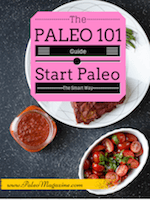5 Mistakes to Avoid When Starting a Gluten-Free Diet

It sounds so easy.
Just avoid gluten, right?
How could you possibly mess that up?
Actually…
It’s Quite Easy to Fail on a Gluten-Free Diet
You may not achieve your goals, you may not stick to it, and you might just make things worse.
But making gluten-free work for you is entirely possible, so long as you have your eyes wide open when you start, and so long as you’re smart about how you approach it.
To help you out, here are…
The 5 Biggest Mistakes When Starting a Gluten-Free Diet
1. Not Knowing Why You’re Going Gluten-Free.
This is the biggest mistake you can make. And it’s the one that will cause you to most quickly give up.
 If you don’t know why EXACTLY why you’re going gluten-free, then how will you ever know if it’s working for you? (That’s a rhetorical question, of course – you won’t know.)
If you don’t know why EXACTLY why you’re going gluten-free, then how will you ever know if it’s working for you? (That’s a rhetorical question, of course – you won’t know.)
Eliminating gluten is not easy, since there are so many gluten-filled foods that will keep tempting you to eat them. From cakes to bread to pasta, you’ll definitely be tempted by something.
However, if you know what your goal is (losing weight, better skin complexion, less bloating and gas, less arthritis, or anything else), then you’ll be much less tempted once you start achieving that goal. For instance, if you go gluten-free and lose 5 pounds in the first 2 weeks, and if your goal was to lose fat, then you’re much more likely to stick to being gluten-free.
2. Expecting Gluten-Free to Be a Miracle-Cure.
Going gluten-free is not the answer to every problem. Some issues are going to require more drastic measures.
For instance, you might have bad digestive problems (diarrhea, stomach cramps, etc.). If you’re going gluten-free to help deal with these issues, then you should acknowledge that you might also be sensitive to dairy, other grains, and/or vegetable oils. If that’s the case, then it might still be beneficial for you to go gluten-free, but it might only get you 20% of the way to optimal health.
Likewise, going gluten-free can help you to lose fat, but it’s only going to help so much if you’re still eating tons of processed sugar.
None of this should discourage you from taking a step in the right direction. After all, caring about your body is a process, and not an end-goal. Just don’t fool yourself into thinking that one change is going to cure everything.
3. Not Knowing Which Foods Contain Gluten.
This is a rather obvious mistake, but a lot of people still make it. Gluten is in a LOT of different foods these days, mostly because wheat is very cheap.
If you’re very sensitive or allergic to gluten, then avoiding all instances of gluten is particularly important. But even if you’re not tested as sensitive or allergic, repeated minor exposures can still trigger the inflammation that you’re trying to cure.
In general, there are 3 common grains that contain gluten naturally: Wheat, Barley, and Rye.
However, here is a much more comprehensive list of foods that almost always contain gluten. Note that it’s possible to make or buy pretty much any of these foods without gluten, but these foods usually or often contain gluten:
Beer, Ale, and Lager
Bread
Breading (this is huge – any food that is breaded is almost always breaded with wheat flour)
Brown rice syrup (even though it’s primarily rice)
Cereal
Communion wafers
Cookies
Crackers
Croutons
Dressings
Energy Bars
Flour
Fried foods – can be contaminated from being fried in oil that has fried something with gluten in it.
Granola
Gravy
Imitation foods (like imitation bacon or seafood)
Marinades
Matzo
Medication (check the labels)
Noodles
Oats (usually contaminated with gluten)
Panko
Pasta
Processed lunch meats
Salad dressings
Sauces (this is often overlooked)
Seasoned rice mixes
Soy Sauce
Soup and soup bases
Stuffing
Supplements
Thickeners (Roux)
Vegetables in sauce
4. Eating Out Without a Plan of Attack.
It’s one thing when you’re cooking a nice dinner at home. You can see everything that is going into your food, ingredient by ingredient. It’s much harder when you’re out at a restaurant.
That’s why you need to have a plan.
First of all, tell the restaurant that you’re allergic to gluten. This isn’t a 100% solution, but most restaurants are pretty careful now when they’re told this. After all, they don’t want to get slapped with a lawsuit if you have a bad allergic reaction after telling them that you were allergic to gluten. Even if you’re not technically celiac, this is a good first step to ensure that you don’t get served gluten-filled food.
Secondly, always plan ahead what you’ll eat. Obviously, you’ll eat out on the spur of the moment sometimes, but most of the time you can plan ahead. Take a look at the menu, pick out a dish that clearly is gluten-free, and then stick to your choice once you get to the restaurant. After all, you’re going to be your own worst enemy if you’re hungry and trying to convince yourself to resist your favorite gluten-filled dish.
5. Not Having Healthy Food Around.
Let’s face it – there are going to be times that you’re hungry, tired, or even irritable. It just happens. And when those times come around, you’re going to want food, but you’re not going to want to spend much time cooking it.
If that happens and you don’t have food readily available, then you’re probably going to drift back to your old habits of eating junk that’s filled with gluten. Luckily, there are solutions.
First of all, learn to cook in bulk. If you don’t already have a slow-cooker, then get one. They’re cheap, and you can cook a lot of food overnight while you sleep. It takes practically no time, and you’ll have food to eat for days.
Secondly, find some healthy gluten-free snacks. This can be anything from fruits to nuts to jerky. Point is, you need some things around for those times when you want food quick.
Planning ahead is important not just for when you’re eating out or traveling; it’s at least as important when you’re at home.
Alright…those are 5 of the biggest mistakes that we see people make when starting a gluten-free diet. Which leads us to this:
5 EASY STEPS TO STARTING A HEALTHY GLUTEN-FREE DIET
1. Read Every Label. No matter what you’re buying, read the ingredients on the label. You’ll be surprised multiple times to find that a product contains gluten even though there’s no good reason that it should.
2. Stock up on Gluten-Free Food. For both meals and snacks, you need a lot of gluten-free food around. Don’t let yourself get hungry and have nothing on hand to eat.
3. Start Reading Gluten Free Blogs. Get inspired by all the things you can cook gluten free. 3 of our favorites are Elana’s Pantry and Simply Gluten Free.
4. Get Clear on What’s Important to You. Is it weight loss? Curing digestive issues? Improving your skin? Whatever it is, be clear about it, and measure your progress through that goal.
5. Use Gluten-Free as a First Step. Gluten-free is great, but it should be just step one in your journey toward caring for and nurturing your body. Use this experience to start noticing how all foods affect your body, particularly processed sugars, grains, and seed oils.
Images: Copyright (c) Thomas Pajot from Fotolia and Tupungato from Fotolia

